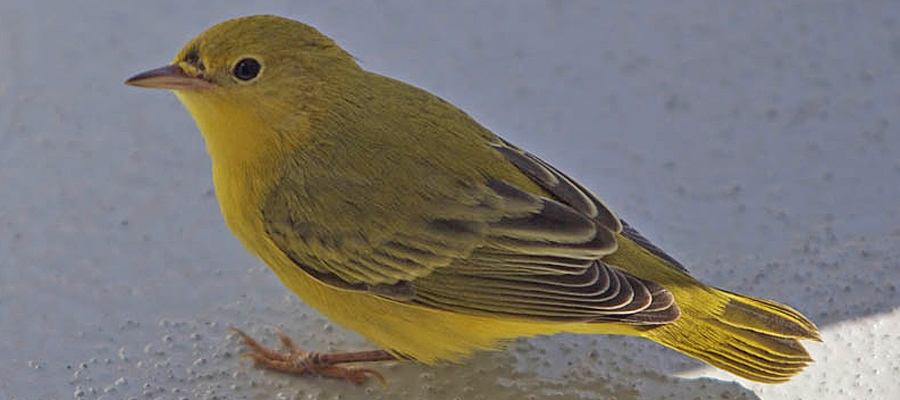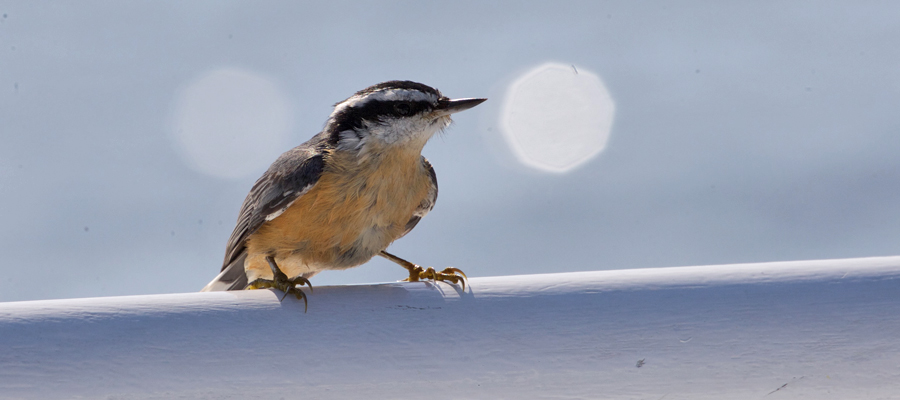WAYWARD LAND MIGRANTS
In addition to the pelagic or “ocean-going” birds, I have already described we also encounter a surprising number of land birds far out to sea. These birds are migrants that are moving along the coast and either get confused and wander far out to sea by accident, or they get blown offshore by strong westerly winds.
Once over the open water, these birds must remain airborne because they lack the buoyancy and balance to rest on the water like Gulls, Terns, Petrels, Gannets, Ducks, and other water birds. The energy demands of constant flight are very high and these poor little birds quickly tire and many end up splashing down into the sea… an unfortunate end to their migration. The lucky ones find their way back to shore or find a ship upon which to rest and find a few bits of food to eat.
Over the years the list of land birds which I have identified hopping about the decks of the Privateer is long. A few of the more memorable species include: Yellow-bellied Flycatcher, Orange-crowned Warbler (pictured on a woman’s head at right. She was a very neat lady. The woman not the warbler.), Yellow-breasted Chat, Northern Parula, Red-eyed Vireo, Red-breasted Nuthatch (a common one for some reason), and even a Saw-whet Owl!
One year, a Hoary Bat (yeah I know it’s not a bird) even swooped repeatedly over our whale watch boat … much to the dismay of a few passengers!
When these little visitors land on the boat it is a great opportunity to see up-close species of birds that normally we only get fleeting glimpses of on land as they dart amongst heavy brush or flit about in high tree-tops. They are often so tired that they allow themselves to be handled by people or even use people as a warm, soft place to sleep. It is important to remember, however, that these birds are very tired, very stressed, and too much handling or attention from humans can cause them to simply expire.
Generally, it’s best to scoop them up, put them in a well ventilated, dark box with a shallow (we don’t want any drownings) dish of water and maybe a dead insect if you can find (or make) one. Once back on shore simply release the bird in a suitable habitat and hope for the best. You’ve done all you could.



